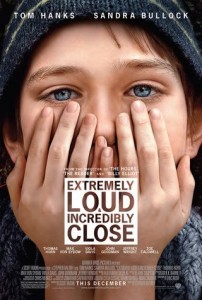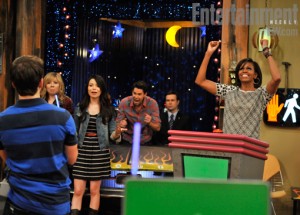“We didn’t need dialogue,” said Norma Desmond (Gloria Swanson) unforgettably in Billy Wilder’s classic, “Sunset Boulevard.” “We had faces!” Swanson herself had been a silent film star, but she is best remembered for playing the actress driven mad by being made obsolete when the talkies shifted the spotlight from faces to a snappy way with a wisecrack. Of course, “Sunset Boulevard” is a talkie, filled with brilliant dialogue from Wilder, Charles Brackett, and D.M. Marshman, Jr. (“You used to be big in pictures.” “I’m still big. It’s the pictures that got small.”) But Desmond was right about the faces. Partly because they were silent for the first decades of film-making, the movies invented a new vocabulary of story-telling and new techniques of acting. When D.W. Griffith pioneered the close-up, the declamatory, projecting to the back of the theater style of acting on the stage began to evolve into the subtle, intimate evocation of thought and emotion the way we see it in real life, with a flicker of an eyelid, the trembling of the corner of the mouth, more eloquent than the most lyrical and evocative words.
“The Artist” is a new film from French writer/director Michel Hazanavicius that evokes this classic era of Hollywood in form and content, set in the moment of transition to talkies, black and white and almost completely silent, with references to “Singin’ in the Rain,” “A Star is Born,” and even “Citizen Kane,” but very much of our moment, and so fresh and inventive that color and sound seem superfluous.
Jean Dujardin plays handsome silent film superstar Georges Valentin. He appears at the opening of his latest film with his favorite co-star, his Jack Russell terrier, dancing, bowing, and basking in the adoration of the audience — and hogging the spotlight to annoy his human co-star (Missy Pyle). Outside the theater, when an enthusiastic fan falls into his path, he laughs good-heartedly. The next morning, a photo of Valentin and his fan appears in the paper and his wife (Penelope Ann Miller) does not find it amusing. The charming whimsy and dazzling smile that work so well on screen do not mollify her.
The fan is a would-be actress named Peppy Miller (the very appealing Argentine actress Bérénice Bejo, wife of Hazanavicius). She gets her first break as a dancer on Valentin’s new film. In a captivating scene, they have to do repeated takes of a scene where they dance together because they keep getting distracted by their immediate sense of connection. In the film within a film, he is a star and she is an extra. But in their real story, it is clear she is a lead.
The sound era arrives and Miller becomes a star while Valentin, stubbornly insisting on making a new silent film, loses his wife, his money, and finally, at auction, everything he owns, including his dinner jacket and portrait. Can there be a happy ending? Well, it’s a movie!
There’s a bit of a backlash to this film, following its rapturous reception in Cannes and year-end awards, with some complaints that it plays to the affections of critics and movie insiders and that it is a nice enough film that benefits from being a valentine to cinema rather than on its own stand-alone merits. That is unfair to the intelligence behind the film and the subtle qualities beyond the quaint settings. Hazanavicius shifted the frames-per-second to be closer to the slightly jerky silent movie standard to invite us back into that world. But it is not just a re-creation of an archaic technique. The characters are real, vivid, and affecting. As shown by its final moment, the movie transcends its story to be more than a tribute to a simpler time. It is a lesson on the power of movies to re-invent a visual vocabulary for the universal language that goes beyond the borders of countries and cultures.
(more…)




